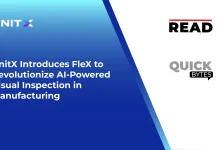Hyundai Motor Group and NVIDIA announced their deepened collaboration to build a next-generation “AI Factory” aimed at accelerating innovation in vehicle autonomy, smart manufacturing and robotics. Hyundai will deploy an estimated 50,000 NVIDIA Blackwell GPUs, establish an AI Technology Center and create digital-twin and simulation platforms to support mobility of the future.
Key Elements of the Collaboration
The initiative covers several fronts:
Hyundai will create a supercomputing setup powered by NVIDIA. This will train and validate AI models. It will also deploy them for in-vehicle intelligence, robotics, and factory automation.
NVIDIA Omniverse and Cosmos platforms run on RTX PRO servers. They help create digital twins of manufacturing and driving environments. This enables simulation-based testing for autonomous vehicles and robots.
NVIDIA DRIVE AGX Thor platform is now in Hyundai vehicles. It runs the safety-certified DriveOS. This upgrade enhances driver assistance and in-vehicle intelligence.
A significant investment (around US $3 billion) to deepen Korea’s domestic AI ecosystem, including the establishment of a Hyundai Physical AI Application Center and coordination with the Korean government.
“Together with NVIDIA, we are not only building advanced technologies but also laying the foundation for a robust AI ecosystem in Korea – one that fosters innovation, nurtures talent and positions us at the forefront of global AI leadership”, added Hyundai’s Executive Chairman, Euisun Chung.
“From vehicle design and manufacturing to robotics and autonomous driving, NVIDIA’s AI and computing platforms are transforming how the world moves”, added NVIDIA’s CEO Jensen Huang.
Implications for the Automotive Industry
This partnership signals a pivotal shift in how vehicles and mobility solutions will be engineered, produced and monetised.
Accelerating Software-Defined Vehicles
Traditionally, the industry has pivoted around mechanical engineering and incremental electronics. With Hyundai and NVIDIA’s AI Factory, the focus clearly shifts to software-defined vehicles (SDVs) where AI trains onboard and offboard, enables over-the-air updates and transforms cars into continuously-evolving intelligent systems. As Hyundai’s earlier announcement states:
“The companies will collaboration including adopting accelerated computing, generative AI, and industrial digitalization technologies across its value chain.”
Also Read: VAST Data Federal and Leidos Unveil Agentic Cybersecurity Platform with NVIDIA AI
Smart Factories & Digital Twins
The manufacturing landscape is evolving. Hyundai is utilizing digital-twin technology through Omniverse and Cosmos to create factory simulations. These simulations allow for optimized throughput, reduced defects, and improved manufacturing agility. This shows OEMs and suppliers that factory floor innovation is as important as vehicle design.
Autonomous Driving & In-Vehicle Intelligence at Scale
Hyundai is preparing for next-generation driver-assistance and autonomous features. They are implementing NVIDIA DRIVE AGX Thor along with a Blackwell-based training setup. This change moves the industry from basic ADAS (Advanced Driver Assistance Systems) to full autonomy. It highlights service-based mobility and in-vehicle AI. It also opens up new revenue opportunities beyond traditional vehicle sales.
Effects on Businesses Operating in the Automotive Ecosystem
The Hyundai–NVIDIA collaboration offers opportunities and challenges for many businesses. This includes Tier 1 suppliers, software vendors, service providers, and manufacturers.
Opportunities
Software, AI, and data-platform providers can explore new vehicle lines. They can also enhance infotainment systems and develop autonomous stacks. This happens as Hyundai enhances its AI infrastructure.
Manufacturing suppliers and automation firms can enhance or grow into plants that use digital twins and robotics. This shift is driven by Hyundai’s smart-factory blueprint.
Mobility service and ecosystem players need to get ready for a future where Hyundai and others roll out vehicles as platforms. These vehicles will support subscription services, in-vehicle intelligence, and ongoing updates. This shift will create new business models.
Challenges
Supply-chain transformation demands suppliers evolve quickly. They need to move from offering only components. Now, they should deliver software-integrated systems, data services, and AI-ready hardware.
To stay ahead, companies need to invest in AI, simulation, digital twins, and autonomous systems. This will help them build expertise in these areas.
Vehicles create more data and use AI. So, businesses need strong data systems. These systems must focus on processing, privacy, cybersecurity, and managing models.
Mid-market suppliers and new entrants can succeed in a busy market. They should find their unique strengths and build strong partnerships. This approach helps them compete with big players like Hyundai and NVIDIA.
Conclusion
What should automotive-industry leaders keep an eye on?
Model training, validation and deployment cycles will accelerate as infrastructure like Hyundai’s AI Factory scales-expect faster time-to-market for new features and vehicle generations.
Vehicle value proposition shift: The vehicle will increasingly be a platform, not simply a product. This means continuous updates, new apps, subscription services, and extended vehicle lifecycles.
Factory evolution: The smart factory becomes a strategic asset—digital twins, robotics, AI analytics and simulation will define manufacturing competitiveness, not just raw capacity.
Ecosystem play: Partnerships between automakers, compute/AI players, infrastructure providers and government (as seen here) will proliferate. Success will depend on aligning across partners and data flows.
Regulators are taking action. They’re updating policies on software assurance, safety certification, and cyber safety. This comes as in-vehicle AI and autonomy advance.
Hyundai Motor Group and NVIDIA are transforming the automotive industry through their partnership. Using AI in vehicles and manufacturing sets a new standard. The future of mobility depends on smart systems, data-based production, and new vehicle designs. To remain competitive in this AI-driven landscape, automotive companies must adapt.




